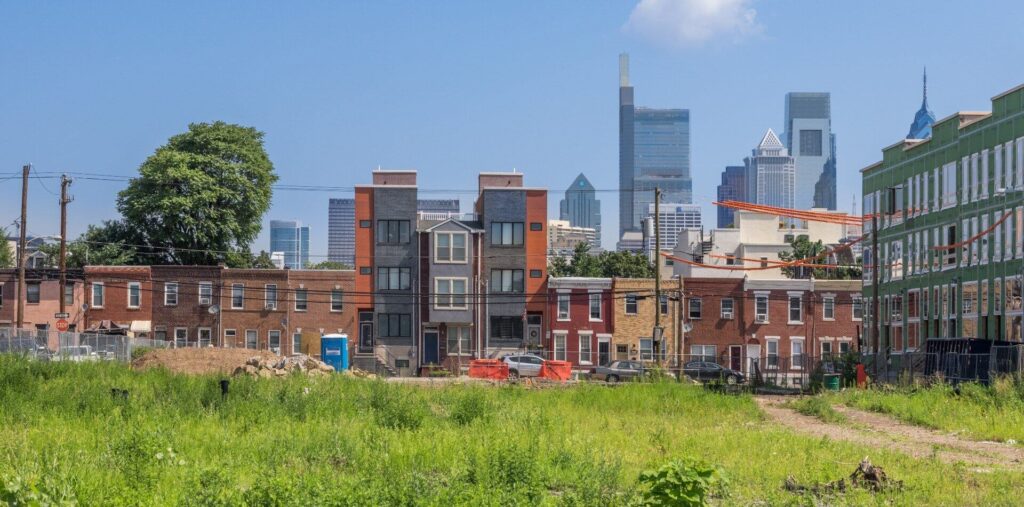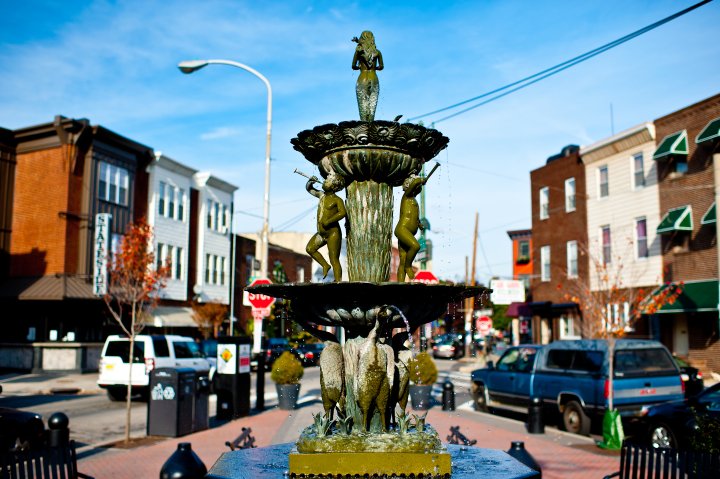South Philadelphia
South Philadelphia, popularly known as “South Philly,” is a distinctive area in the city of Philadelphia. This vibrant neighborhood, bordering the Delaware River to the east and south, South Street to the north, and the Schuylkill River to the west, is a melting pot of diverse ethnic, racial, and religious communities. With its rich history of immigration and hard-working ethos, South Philadelphia has, over time, transformed into a symbol of striving and perseverance.
The Early Settlements
The earliest inhabitants of South Philadelphia were the Lenni Lenape Indians, who used the Delaware shoreline as a source of food. European settlers, starting with the New Sweden colony, gradually began to inhabit the area. The Swedish influence is still evident in the region, with the Gloria Dei or the “Old Swedes Church” standing as a testament to the early European settlement.
The area soon saw the arrival of the Dutch, followed by the English. The latter established their presence in 1681 when King Charles II granted William Penn a charter for Pennsylvania. At that time, South Philadelphia was a rural farmland outside the city limits. It remained so throughout the 18th century, composed of several separate districts including Southwark, Moyamensing, and Gray’s Ferry. These names continue to describe areas within the neighborhood today.
The Arrival of the Irish and African Americans
The ethnic landscape of South Philadelphia underwent a significant shift in the 19th century. Irish immigrants, who had been among the first settlers of Philadelphia, began to move south in the late 18th century. They were drawn by jobs such as coal heaving along the banks of the Schuylkill and settled primarily in Southwark and Moyamensing.
Sharing the cramped quarters with the Irish were free African Americans, who formed about 24 percent of Moyamensing’s residents in 1830. The rise of nativism in the nation led to both Blacks and the Irish becoming targets of violence in Philadelphia. This spurred the Black community to fight for civil rights in the mid-19th century, with South Philadelphia serving as an important hub.

The Italian Imprint
While the Italian community’s arrival in Philadelphia dates back to the 18th century, it was only in the 1880s that large numbers of Italians began to settle here. The majority of these immigrants came from impoverished regions of Southern Italy, seeking opportunities in Philadelphia. These immigrants brought with them their regional identities, considering themselves as Abruzzese or Pugliese rather than Italian. Over time, they forged a cohesive Italian community in South Philadelphia, establishing churches, gathering in bars, and conversing in their native tongues.
The Italian community has contributed significantly to South Philadelphia’s cultural fabric, establishing the Italian Market, creating both the cheesesteak and the hoagie, and introducing Italian roast pork sandwiches, water ice, tomato pie, and pizza to the Philadelphia cuisine.
The Influence of Other Ethnic Groups
South Philadelphia’s diversity extends beyond its Italian, Irish, and African American communities. The region has also been home to a significant Jewish population, primarily from Central and Eastern Europe. They settled in the area in the first half of the 20th century, especially in the diverse area now known as Queen Village.
A smaller but significant Greek immigrant community also flourished around the same time, leading to the establishment of Greek Orthodox parishes in South Philadelphia. The continued importance of the homeland pictured in this mural helps put a visual face on the activities of generations of South Philadelphians as they built businesses, created houses of worship, founded civic organizations, and celebrated together.
The Industrial Era
With the advent of the First Industrial Revolution, South Philadelphia saw rapid urban development and population growth. This expansion was largely due to an influx of working-class laborers and immigrants seeking factory jobs and dock work. The area’s urbanized border eventually expanded to reach that of Philadelphia proper, or what is today known as Center City Philadelphia.
The area continued to grow, becoming a crucial part of Philadelphia’s large industrial base and attracting immigrants from Italy, Ireland, Poland, and many Southern European and Eastern European countries during the late 19th and early to mid 20th centuries.

The Legacy of Frank Rizzo
South Philadelphia’s political landscape has been significantly shaped by one of its own – Frank Rizzo. Born and raised in the neighborhood, Rizzo rose to prominence as the Police Commissioner and later served as the Mayor for two terms. Although a controversial figure, Rizzo commanded significant support among the white community in South Philadelphia and beyond. His law-and-order platform and stance against racial integration resonated with many South Philadelphians, leading to his successful political career.
South Philadelphia: A Sports Hub
South Philadelphia has been synonymous with sports since the construction of the Sesquicentennial Stadium in 1926. Home to the iconic Spectrum in 1967, Veterans Stadium in 1971, and Xfinity Live! in 2012, South Philadelphia has been the go-to destination for baseball, football, and concerts.
The Ethnic Mosaic Today
In the 21st century, South Philadelphia continues to be a neighborhood of change, reflecting the city’s rich history of immigration. While the area retains a sizeable Italian population, South Philadelphia today is home to a diverse mix of ethnic, racial, and religious groups. The 2010 census reveals a dominant white population, with Blacks totaling approximately one-quarter of the population. Asians make up another 12 percent, with a growing Hispanic/Latino population of 8 percent.
South Philadelphia, with its rich tapestry of cultures and heritages, offers a unique glimpse into the city’s historical evolution. Its distinctive identity, diverse communities, and enduring spirit make it a vibrant and integral part of Philadelphia’s urban landscape. Today, South Philadelphia stands as a testament to the city’s multicultural past, and its ongoing narrative of striving, perseverance, and resilience.
